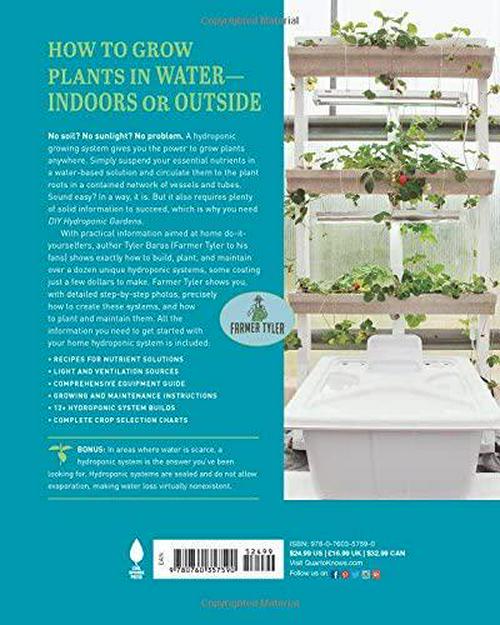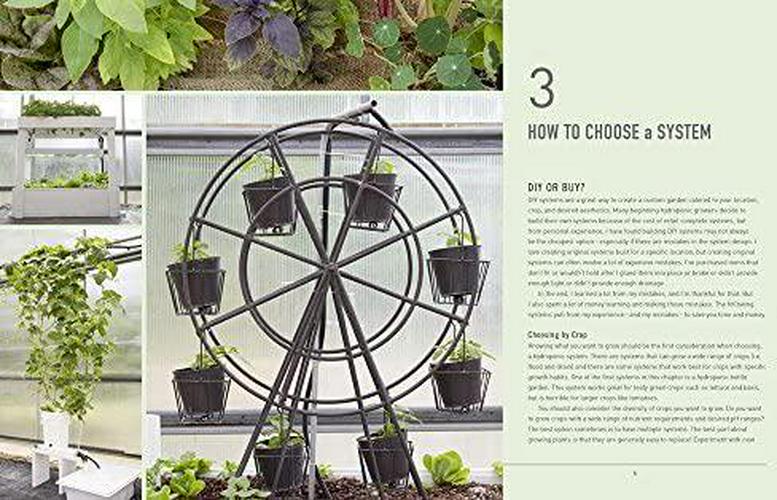Subtotal: $36.29
DIY Hydroponic Gardens: How to Design and Build an Inexpensive System for Growing Plants in Water
- Publisher : Cool Springs Press; 1st edition (28 March 2018)
- Language : English
- Paperback : 200 pages
- ISBN-10 : 0760357595
- ISBN-13 : 978-0760357590
- Dimensions : 20.32 x 1.27 x 25.4 cm
- Best Sellers Rank: 27 in Biology & Life Sciences Textbooks


| Brand | Tyler Baras (Author) |
|---|---|
| MPN | Does not apply |
| Paperback | 200 pages |
| Publisher | Cool Springs Press; 1st edition (28 March 2018) |
| ISBN-10 | 0760357595 |
| Dimensions | 20.32 x 1.27 x 25.4 cm |
| ISBN-13 | 978-0760357590 |
| Language | English |




























